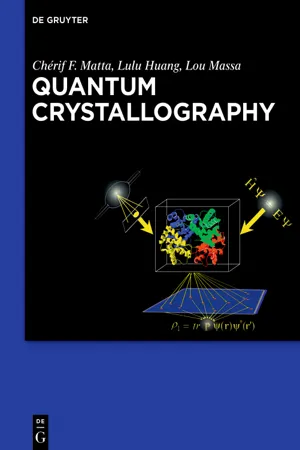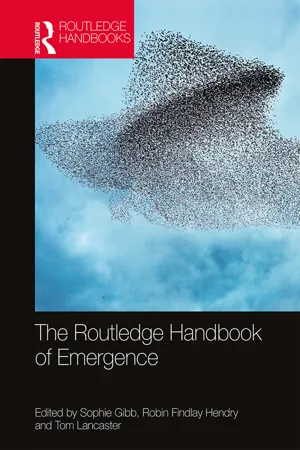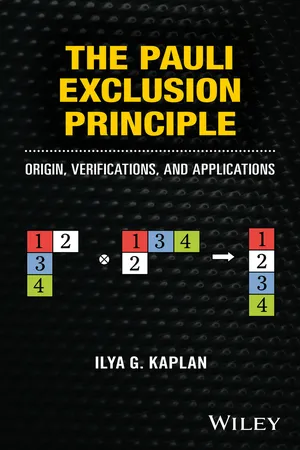Physics
Pauli Repulsion
Pauli repulsion, also known as the Pauli exclusion principle, is a fundamental concept in quantum mechanics. It states that no two identical fermions, such as electrons, can occupy the same quantum state simultaneously. This principle is responsible for the stability of matter and the structure of the periodic table, as it prevents electrons from occupying the same energy level within an atom.
Written by Perlego with AI-assistance
Related key terms
Related key terms
1 of 4
Related key terms
1 of 3
3 Key excerpts on "Pauli Repulsion"
- eBook - ePub
- Chérif Matta, Lulu Huang, Louis Massa(Authors)
- 2023(Publication Date)
- De Gruyter(Publisher)
i = 0, 1, 2, 3, …) such as photons or α-particles, the Pauli exclusion principle does not apply since now the many-particle wave function is symmetric with respect to the exchange of particles. In other words, in the latter case, the wave function does not change its sign upon the interchange of two identical particles, manifested, for example, in Einstein–Bose condensation. This symmetry/antisymmetry principle has been introduced in the theory as a postulate that correctly predicts corresponding statistics of the two families of particles.A direct consequence of the Pauli principle is what is known in chemistry as the “exclusion principle,” that is, the impossibility of electrons to be described by the same four quantum numbers in isolated atoms, for example. This principle, is what allows elements to exist and form the system in the periodic table, prevents material objects from occupying the same space at the same time, and is the physical mechanism preventing neutron stars from collapsing under their own enormous gravitational central pull. A many-boson system such as photons, in contrast to one made of fermions, tends to populate the same quantum state as occurs, for example, in the generation of lasers. Reviews of the origin and meaning of the principle can be found in Massimi’s book [20 ] and in chapter 20 (pp. 427–447) of Henry Margenau’s book [21 ].The incorporation of both indistinguishability and the Pauli principle into nonrelativistic ab initio calculations is done “by hand,” since the symmetry properties of the wave function emerge naturally only through a relativistic treatment [9 ]. To simultaneously incorporate indistinguishability and antisymmetry into the N-electron wave function, one can form the so-called antisymmetrized product of spin orbitals. A “spin orbital,” χi , is defined as the product of a spatial orbital and a spin function:(2.18)χ i( x ) =ϕ i( r )σ i( ω ) =ϕ i( x , y , z )σ i( ω ) ,whereϕ iis the spatial one-electron function factor of χi , andσ irefers to either α or β and each of which is a function of the spin coordinate ω such that(2.19)and thatS ˆα = +1 2ℏ α ,(2.20)S ˆβ - eBook - ePub
- Sophie Gibb, Robin Findlay Hendry, Tom Lancaster, Sophie Gibb, Robin Findlay Hendry, Tom Lancaster(Authors)
- 2019(Publication Date)
- Routledge(Publisher)
The only function that this holds for is zero, hence the probability of finding two fermions (for example, electrons) at the same place is zero. This is the Pauli exclusion principle, an emergent property, arising out of the wavefunction of a system that has no classical analogue. Returning to atoms, it is the exclusion property that determines the emergent orbital-like picture (essentially only one electron can exist in each “orbit”). Colour: Why does a material have a particular colour? This is a straightforward question but with an answer deeply rooted in quantum mechanics. In isolated atoms, electrons occupy different energy levels. Due to the Pauli exclusion principle, it is only possible for electrons with different (up and down) spins to occupy the same energy level. In periodic, crystalline solids, these energy levels are replaced with bands of closely packed energy levels whose relative location and form are determined by the solution of the Schrödinger equation for that material. If an electron is excited from a filled level to an empty one by absorbing energy (usually a packet of light called a photon), then we have an electron in an excited state. However, not all photons are absorbed by the material, because electrons cannot absorb energies of arbitrary energies – electrons can only be in specific energy states. So to move an electron from one allowed state to another allowed state requires a photon whose energy is the difference in energy of those two states. White light contains photons of all energies 3 in the visible spectrum. When this light shines on an object, it interacts with the electrons in the material. Photons with energies that correspond to the difference in electron energy levels get absorbed, and electrons are promoted from the lowest energy states to higher energy states. The remaining light is reflected from the object, and that is what reaches our eyes. The colour we see corresponds to the light that is not absorbed - eBook - ePub
The Pauli Exclusion Principle
Origin, Verifications, and Applications
- Ilya G. Kaplan(Author)
- 2016(Publication Date)
- Wiley(Publisher)
In what follows we will not discuss more this very important but unsolved problem. Let us turn to another aspect of the Pauli exclusion principle. According to it, only two types of permutation symmetry are allowed: symmetric and antisymmetric. Both belong to the one‐dimensional representations of the permutation group, while all other types of permutation symmetry are forbidden. On the other hand, the Schrödinger equation is invariant under any permutation of identical particles and its solutions may belong to any representation of the permutation group, including the multidimensional representations that are forbidden by the Pauli exclusion principle. Here we can repeat the question asked in the end of Section 1.2 : whether the Pauli principle limitation on the solutions of the Schrödinger equation follows from the fundamental principles of quantum mechanics or it is an independent principle. Depending on the answer to this question, physicists can be divided into two groups. Some physicists, including the founders of quantum mechanics Pauli [6] and Dirac [7] (see also books by Schiff [8] and Messiah [9]), had assumed that there are no laws in Nature that forbid the existence of particles described by wave functions with more complicated permutation symmetry than those of bosons and fermions, and that the existing limitations are only due to the specific properties of the known elementary particles. Messiah [9, 10] has even introduced the term symmetrization postulate to emphasize the primary nature of the constraint on the allowed types of the wave function permutation symmetry
Index pages curate the most relevant extracts from our library of academic textbooks. They’ve been created using an in-house natural language model (NLM), each adding context and meaning to key research topics.
Explore more topic indexes
Explore more topic indexes
1 of 6
Explore more topic indexes
1 of 4


